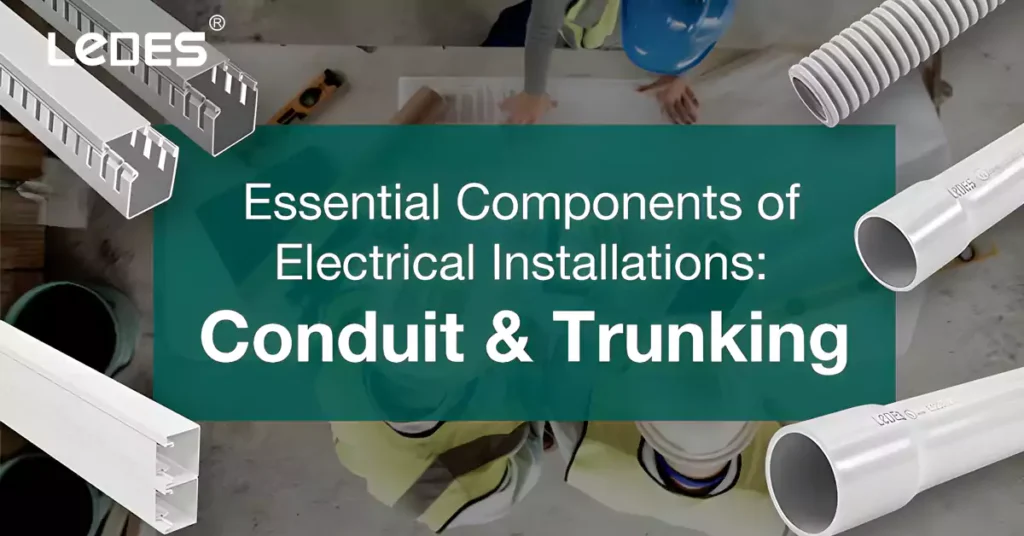
Tabla de contenido
En las instalaciones eléctricas modernas, los conductos y las canalizaciones desempeñan un papel fundamental a la hora de proporcionar una vía segura y organizada para el cableado eléctrico. Estos componentes no solo protegen el cableado de daños físicos, sino que también contribuyen a la eficiencia y la fiabilidad generales del sistema eléctrico. Este artículo ofrece una descripción general completa de los conductos y las canalizaciones, destacando su importancia y sus aplicaciones en las instalaciones eléctricas.
Descripción general de conductos y canalizaciones
Conducto:
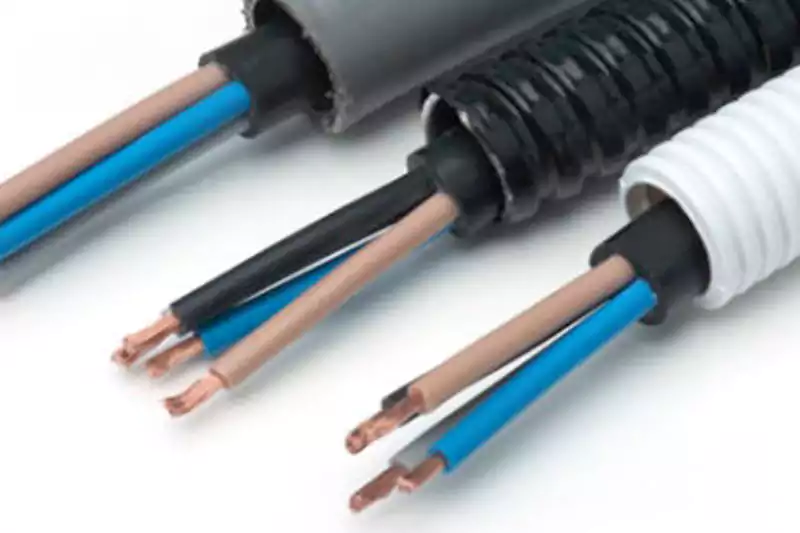
El término conducto hace referencia a un canal o tubo protector que encierra los cables eléctricos, proporcionando un escudo contra elementos externos y evitando el contacto accidental con los cables. Está disponible en varios tipos, como conducto rígido y conducto flexible. El conducto rígido, generalmente hecho de metal o PVC, ofrece una mayor resistencia mecánica y se usa comúnmente en entornos industriales. Por otro lado, el conducto flexible, generalmente hecho de PVC o materiales recubiertos de metal, proporciona flexibilidad y facilidad de instalación en áreas con curvas cerradas o vibraciones.
Canalización:
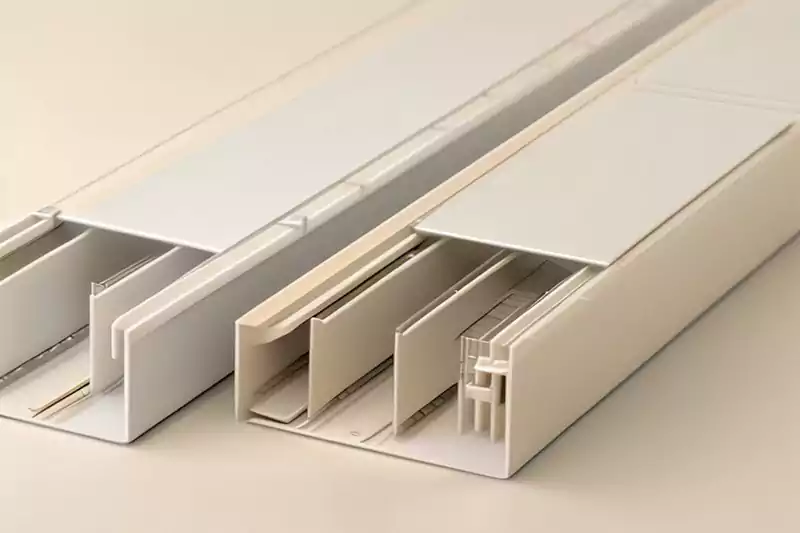
Los canales, también conocidos como canaletas para cables o canaletas para cables, son un sistema de conductos cerrados que albergan cables eléctricos, lo que permite un enrutamiento organizado y protección. Constan de una base y una cubierta, que se puede abrir fácilmente para la instalación o el mantenimiento de cables. Los canales vienen en diferentes tamaños y formas, como rectangulares, cuadrados o circulares, para acomodar varios tamaños y cantidades de cables. Por lo general, están hechos de materiales como PVC o metal, lo que proporciona durabilidad y aislamiento eléctrico.
Importancia de los conductos y canalizaciones en las instalaciones eléctricas:
Protección del cableado: Uno de los principales propósitos de los conductos y canalizaciones es proteger el cableado eléctrico de daños físicos, humedad, productos químicos y otros factores externos. Al encerrar los cables dentro de una carcasa protectora, estos componentes minimizan el riesgo de accidentes, como cortocircuitos o descargas eléctricas, lo que garantiza la seguridad de las personas y la integridad del sistema eléctrico.
Organización y limpieza: Los conductos y las canalizaciones contribuyen a una instalación eléctrica bien organizada y estéticamente agradable. Permiten el enrutamiento sistemático de los cables, lo que evita el desorden y la confusión. Este enfoque organizado simplifica las actividades futuras de mantenimiento o resolución de problemas, lo que ahorra tiempo y esfuerzo.
Cumplimiento de normas: Los conductos y las canalizaciones desempeñan un papel fundamental a la hora de cumplir con los requisitos de los códigos eléctricos y las normas de la industria. Estas normas especifican los tipos, tamaños y métodos de instalación de conductos y canalizaciones, lo que garantiza la uniformidad y la consistencia en las instalaciones eléctricas. El cumplimiento de estas normas es esencial para el cumplimiento normativo y para garantizar la seguridad y la fiabilidad del sistema eléctrico.
Flexibilidad y adaptabilidad: Los sistemas de conductos y canalizaciones ofrecen flexibilidad para adaptarse a cambios o ampliaciones del sistema eléctrico. Permiten redirigir o ampliar fácilmente el cableado sin necesidad de realizar modificaciones importantes. Esta flexibilidad hace que los conductos y canalizaciones sean adecuados tanto para aplicaciones residenciales como comerciales, donde las modificaciones y las actualizaciones son habituales.
¿Qué es el Conducto?
Definición y propósito del conducto:
Un conducto es un canal o tubo protector que se utiliza para encerrar cables eléctricos, lo que proporciona un paso seguro y aislamiento. Su propósito principal es proteger el cableado eléctrico de daños físicos, humedad y factores ambientales. Al contener y proteger los cables, el conducto garantiza la seguridad y la longevidad del sistema eléctrico.
Tipos de conductos:
Los conductos están disponibles en distintos materiales, cada uno de los cuales ofrece distintas características y es adecuado para distintas aplicaciones. Los materiales más comunes incluyen:
●Conducto metálico:
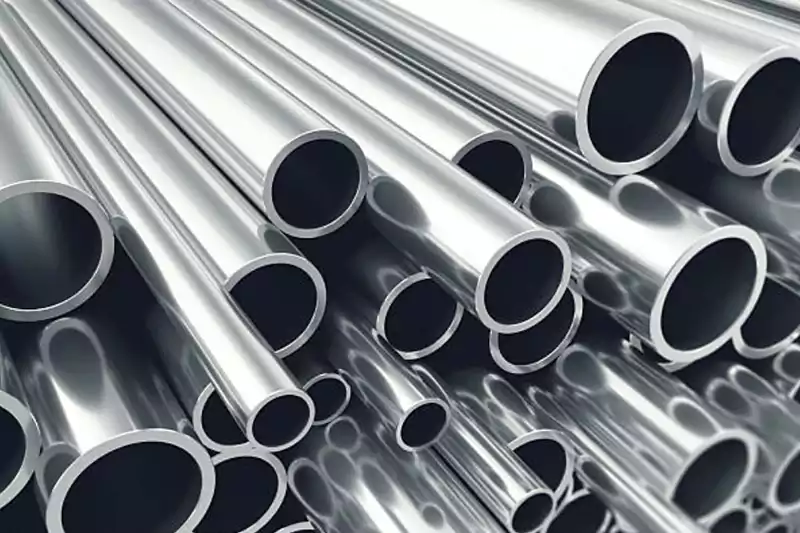
Conducto metálico rígido (RMC): Fabricado en acero, el RMC es conocido por su alta resistencia mecánica y durabilidad. Se utiliza comúnmente en aplicaciones industriales y comerciales donde se requiere una protección robusta.
Tubería Metálica Eléctrica (EMT): El EMT está hecho de acero galvanizado o aluminio, lo que proporciona una opción liviana y económica. Se utiliza comúnmente en aplicaciones residenciales y comerciales.
●Conducto de PVC:
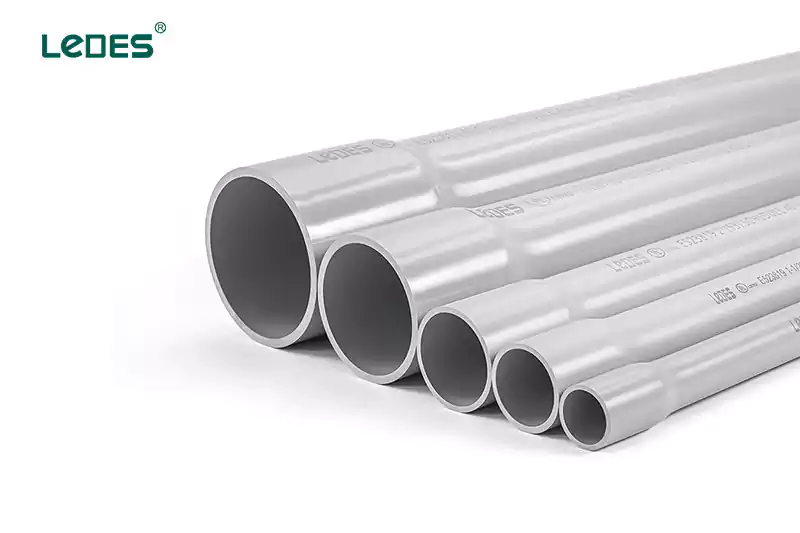
Conducto de cloruro de polivinilo (PVC): Conducto de PVC Es una opción popular debido a su excelente resistencia a la corrosión, asequibilidad y facilidad de instalación. Está disponible en diferentes espesores y se utiliza comúnmente en aplicaciones residenciales, comerciales e industriales.
●Conducto flexible:
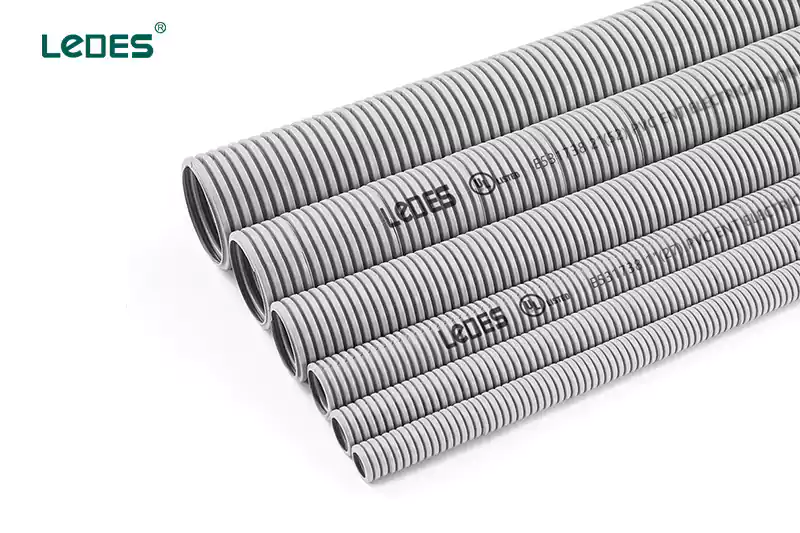
Conducto metálico flexible (FMC): El FMC consiste en una tira de metal enrollada en espiral con un revestimiento de PVC flexible. Ofrece versatilidad y facilidad de instalación en áreas que requieren flexibilidad, como curvas cerradas o vibraciones.
Conducto flexible hermético a líquidos (LFMC): LFMC es un conducto flexible con un revestimiento resistente a los líquidos, lo que lo hace adecuado para áreas donde la exposición a líquidos o humedad es una preocupación.
Tubería eléctrica no metálica: Tubos eléctricos no metálicos (ENT), fabricados en PVC, también conocidos como conducto flexible o conducto plástico, es un tipo de conducto eléctrico utilizado para proteger y enrutar el cableado eléctrico en edificios.
Normas y reglamentos para conductos:
En Estados Unidos y Canadá, la instalación de conductos, en particular de conductos de PVC, debe cumplir con normas y reglamentos específicos. El Código Eléctrico Nacional (NEC) en Estados Unidos y el Código Eléctrico Canadiense (CEC) en Canadá proporcionan pautas para la instalación de conductos, que abarcan aspectos como el tamaño, el tendido, los soportes y los requisitos de conexión a tierra de los conductos. Estos códigos garantizan la uniformidad, la seguridad y el cumplimiento de las normas eléctricas.
El conducto de PVC es el más popular en el mercado y los tipos de PVC más utilizados, como el conducto de PVC rígido y los tubos no metálicos, deben cumplir con:
En América: UL651, UL1653, NEMA TC-2
En Canadá: CSA C22.2 No.211.2, CSA C22.2 No.227.1
Aplicaciones del conducto:
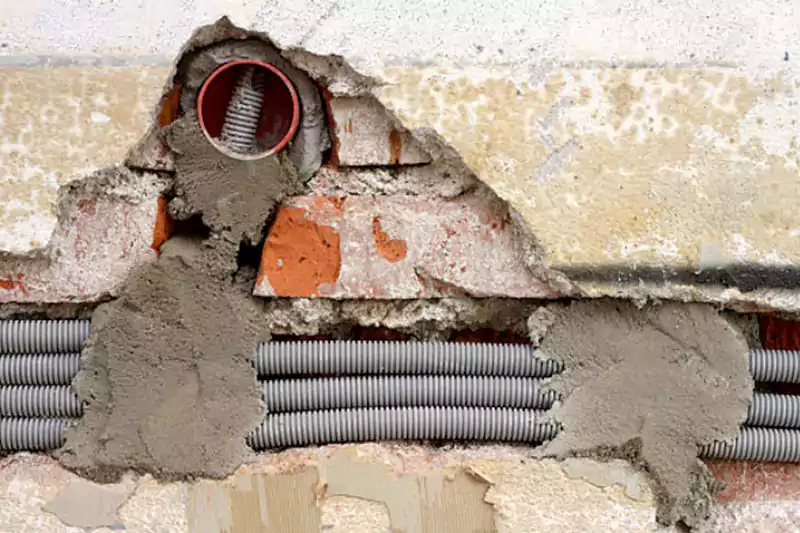
Los conductos encuentran aplicaciones en diversas instalaciones eléctricas, entre ellas:
Aplicaciones residenciales:
Cableado oculto en paredes, techos y pisos.
Cableado para artefactos de iluminación, enchufes e interruptores.
Instalaciones eléctricas exteriores, como iluminación paisajística.
Aplicaciones comerciales e industriales:
Cableado para edificios comerciales, oficinas y espacios comerciales.
Cableado de maquinaria y equipos industriales.
Lugares peligrosos, donde el conducto proporciona protección adicional contra entornos inflamables o explosivos.
Beneficios del conducto:
- Protección contra daños físicos, humedad y factores ambientales.
- Mayor seguridad al reducir el riesgo de descargas eléctricas o cortocircuitos.
- Organización y orden, simplificando el mantenimiento y la resolución de problemas.
- Flexibilidad para futuras modificaciones o actualizaciones del sistema eléctrico.
- Cumplimiento de los códigos y normativas eléctricas, garantizando la seguridad y el cumplimiento normativo.
¿Qué es el Trunking?
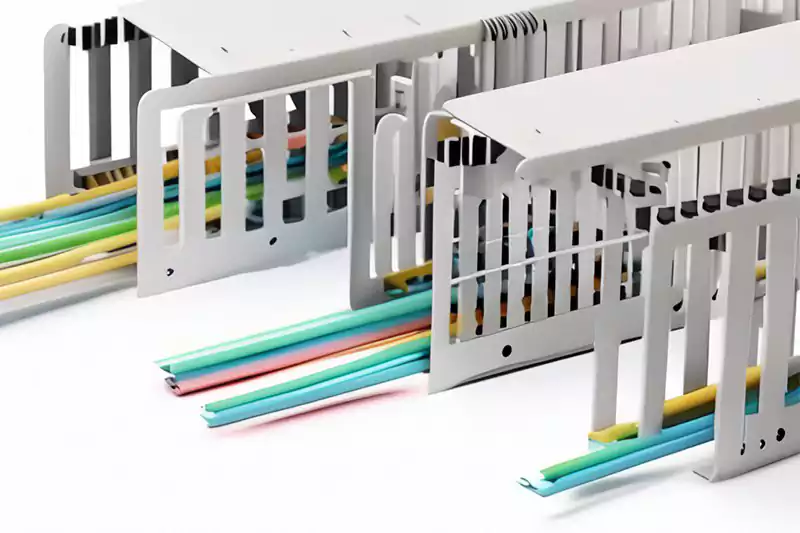
Definición y significado del trunking:
Los canales, también conocidos como canaletas para cables o canaletas para cables, son un sistema de conductos cerrados que sirven como conducto protector para los cables eléctricos. En la mayoría de los casos, tienen forma rectangular o cuadrada y tienen una tapa que se puede quitar. Su propósito principal es organizar y enrutar los cables de manera ordenada y eficiente, lo que garantiza una fácil instalación, mantenimiento y resolución de problemas del sistema eléctrico. Los canales desempeñan un papel importante a la hora de proporcionar un entorno seguro y organizado para los cables, lo que minimiza el riesgo de daños, enredos o contacto accidental.
Tipos de canalización:
Canalización de cables:
Las canaletas para cables, también conocidas como conductos para cables, son un tipo de canal diseñado específicamente para proteger y enrutar cables eléctricos. Están disponibles en varios tamaños y materiales, como PVC, metal o compuestos, para adaptarse a diferentes capacidades de cable y condiciones ambientales. Las canaletas para cables se utilizan comúnmente en entornos residenciales, comerciales e industriales para crear rutas organizadas para cables de energía, datos o comunicaciones.
Canaletas de iluminación:
Las canaletas para iluminación están diseñadas específicamente para la instalación de luminarias. Ofrecen una solución conveniente y organizada para enrutar cables de alimentación y control a múltiples puntos de iluminación. Las canaletas para iluminación suelen tener secciones prefabricadas con opciones de montaje integradas para luminarias, lo que simplifica la instalación y el mantenimiento. Se utilizan comúnmente en edificios comerciales, espacios minoristas e instalaciones de iluminación a gran escala.
Canalización de barras colectoras:
Canalización de barras colectoras (BBT) es un sistema de canalización utilizado para distribuir energía eléctrica en edificios e instalaciones industriales. Consiste en un gabinete de metal que alberga múltiples barras colectoras, que son conductores utilizados para transmitir energía eléctrica. BBT ofrece una solución compacta y eficiente para la distribución de energía, reduciendo la necesidad de tendidos largos de cables y cableado individual. Se utiliza comúnmente en aplicaciones donde se necesitan suministrar cargas de alta potencia, como iluminación, maquinaria o sistemas de HVAC.
Canalización multicompartimento:
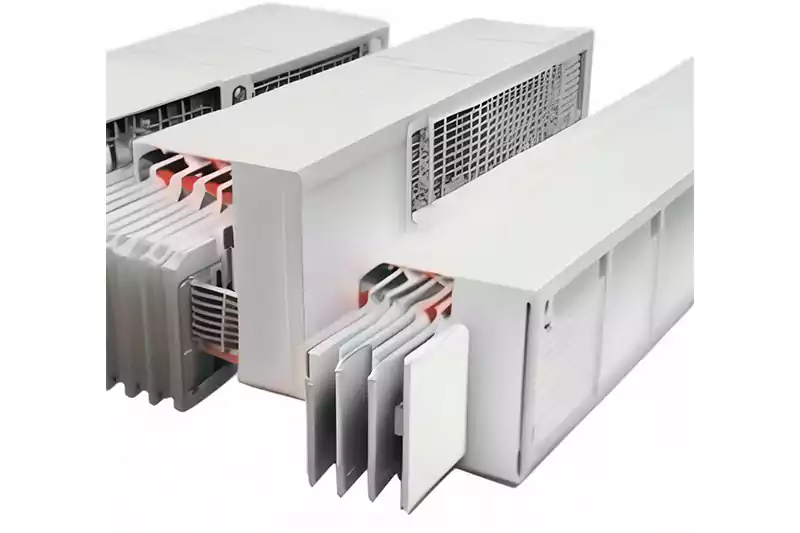
Los canales multicompartimentos cuentan con compartimentos o canales separados dentro de un solo gabinete. Cada compartimento está diseñado para alojar diferentes tipos de cables, como cables de alimentación, cables de datos o cables de comunicación, y los mantiene separados. Este diseño permite la separación de varios servicios dentro de un solo sistema de canalización, lo que proporciona una solución ordenada y prolija, al tiempo que reduce el riesgo de interferencia o diafonía entre diferentes tipos de cables. Los canales multicompartimentos se utilizan comúnmente en edificios de oficinas, centros de datos e instalaciones donde es necesario enrutar y administrar de manera eficiente varios servicios.
Agregación de enlaces y mejora de la capacidad en trunking:
En redes, el concepto de trunking hace referencia a la agregación de enlaces, en la que se combinan varias conexiones de red físicas para aumentar la capacidad y la fiabilidad generales. Esta técnica permite un mayor ancho de banda y un mejor rendimiento de la red. El trunking permite equilibrar la carga, en la que el tráfico se distribuye entre los enlaces agregados, y la redundancia, lo que garantiza una conectividad de red ininterrumpida incluso si falla un enlace. Mejora la capacidad de la red y proporciona tolerancia a fallos, lo que la hace especialmente valiosa en entornos de alta demanda, como centros de datos o redes empresariales.
Estándares y protocolos relacionados con trunking:
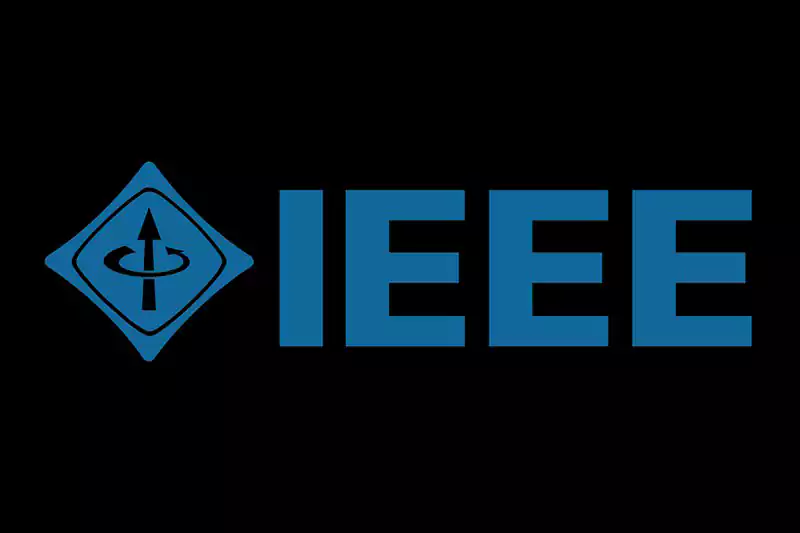
Las tecnologías de trunking, tanto en contextos eléctricos como de redes, suelen cumplir con estándares y protocolos para garantizar la compatibilidad y la interoperabilidad. Algunos estándares y protocolos comunes son:
IEEE 802.3ad: Esta norma define el Protocolo de control de agregación de enlaces (LACP) para enlaces troncales Ethernet, lo que permite la creación y gestión dinámica de enlaces agregados.
Protocolo de redundancia de enrutador virtual (VRRP): VRRP es un protocolo de red que proporciona conmutación por error automática y redundancia en el enrutamiento mediante la creación de una dirección IP virtual que varios enrutadores pueden compartir.
IEEE 802.1Q: El estándar IEEE 802.1Q, también conocido como etiquetado VLAN (Virtual Local Area Network), es un protocolo utilizado en redes informáticas para implementar redes LAN virtuales. Proporciona un método para identificar y separar diferentes VLAN dentro de una infraestructura de red.
Beneficios y ventajas del trunking:
El trunking ofrece numerosos beneficios en diferentes aplicaciones:
Gestión de cables: Los sistemas de canalización proporcionan una ruta organizada y estructurada para los cables, lo que minimiza el riesgo de enredos, daños o desconexiones accidentales. Esto simplifica los procesos de instalación, mantenimiento y resolución de problemas.
Protección: Los canalones protegen los cables de elementos externos, como polvo, humedad o impacto físico, lo que garantiza la longevidad y confiabilidad de la infraestructura eléctrica o de red.
Escalabilidad: Los sistemas de canalizaciones permiten una fácil expansión y modificación de los cables, adaptándose al crecimiento futuro o cambios en el sistema.
Seguridad y cumplimiento: Los canalones garantizan el cumplimiento de los códigos y regulaciones eléctricas, proporcionando un entorno seguro para los cables y reduciendo el riesgo de peligros eléctricos.
Eficiencia: Los trunking simplifican el enrutamiento de cables, ahorran tiempo de instalación y mejoran el rendimiento del sistema a través de la agregación de enlaces y el equilibrio de carga en contextos de red.
Los sistemas de canalización proporcionan una gestión eficiente de los cables, una mejor organización y un mayor rendimiento del sistema, lo que los convierte en componentes esenciales en instalaciones eléctricas y de redes.
Conductos y canalizaciones: ¿cuál es la diferencia?
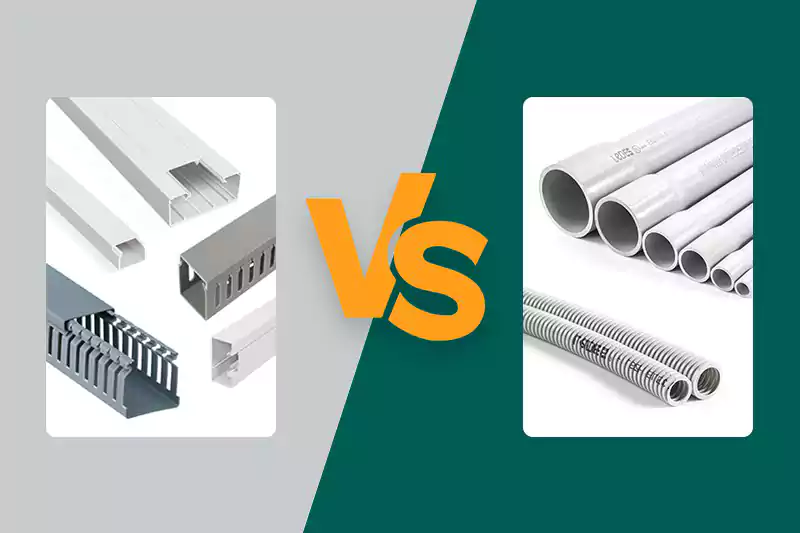
Diferencias de diseño y estructura:
Un conducto es una estructura rígida o flexible similar a un tubo hecha de materiales como metal o PVC.
Generalmente tiene una sección transversal circular, aunque también existen conductos rectangulares o cuadrados.
El conducto está diseñado para encerrar y proteger cables individuales o tramos de cables.
Se puede utilizar tanto para instalaciones expuestas como ocultas.
Canalización:
Un canal es un sistema de vías cerradas que consta de una serie de secciones o compartimentos interconectados. Suele tener forma rectangular o cuadrada.
Puede estar hecho de materiales como PVC, metal o compuesto.
Los canales están diseñados para acomodar múltiples cables y proporcionar una vía para su enrutamiento y protección.
Los canales se utilizan normalmente para instalaciones superficiales o aéreas.
Métodos de instalación y consideraciones:
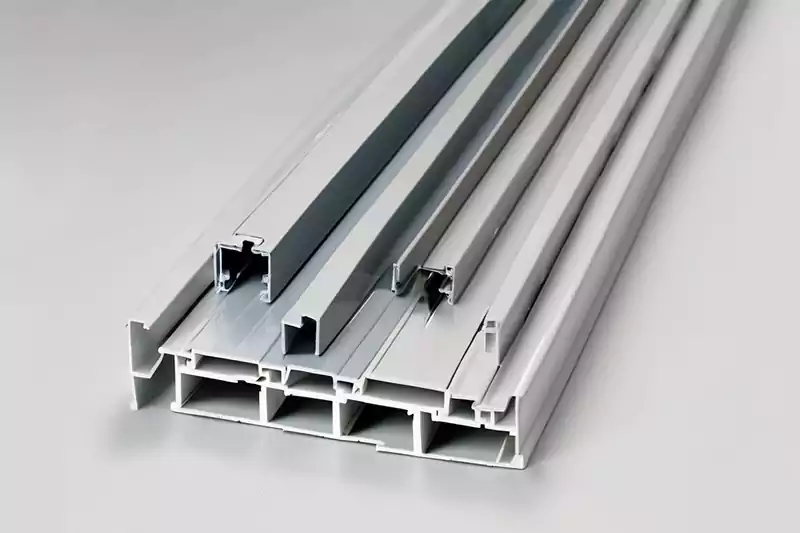
Conducto:
La instalación de conductos implica pasar cables individuales a través del conducto o tirar de cables precableados.
Requiere doblar y cortar el conducto para adaptarlo a la ruta deseada.
Es posible que sea necesario asegurar los conductos con abrazaderas o soportes.
La unión de secciones de conductos a menudo requiere accesorios, conectores o acoplamientos.
Canalización:
La instalación de canaletas implica fijar secciones de canaletas a paredes, techos o pisos mediante soportes, clips o tornillos.
Los cables se colocan o insertan en los compartimentos de canalización.
Los canalones a menudo permiten un fácil acceso a los cables a través de cubiertas extraíbles o puntos de acceso.
Las secciones de canalización se pueden conectar o ampliar mediante conectores o acoplamientos compatibles.
Escenarios de uso y aplicaciones:
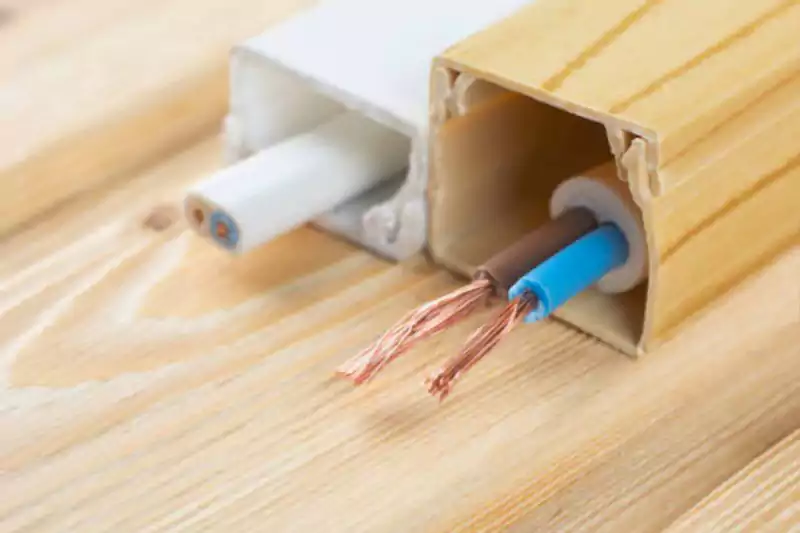
Conducto:
Los conductos se utilizan comúnmente tanto en entornos residenciales como comerciales.
Es adecuado para instalaciones donde se requiere protección y segregación individual de cables, como cableado eléctrico, telecomunicaciones o cableado de datos.
Los conductos se utilizan a menudo en instalaciones ocultas dentro de paredes, pisos o techos.
Canalización:
Los canales se utilizan ampliamente en entornos comerciales, industriales e institucionales.
Es ideal para instalaciones que involucran múltiples cables o tendidos de cables, como distribución de energía, centros de datos o instalaciones de audio/video.
Los canalones se utilizan comúnmente para instalaciones montadas en superficie donde el tendido de cables debe ser visible y de fácil acceso.
Factores de costo y consideraciones:
Conducto:
Los conductos pueden ser más costosos debido al costo de los materiales, los accesorios y la instalación que requiere mucha mano de obra.
El costo puede variar dependiendo del tipo de conducto (rígido, flexible) y material (metálico, PVC).
Canalización:
Los canalones suelen ser más rentables que los conductos, especialmente para instalaciones con múltiples cables.
El costo puede variar según el material de la canaleta, el tamaño y la complejidad de la instalación.
Requisitos de mantenimiento y facilidad de acceso:
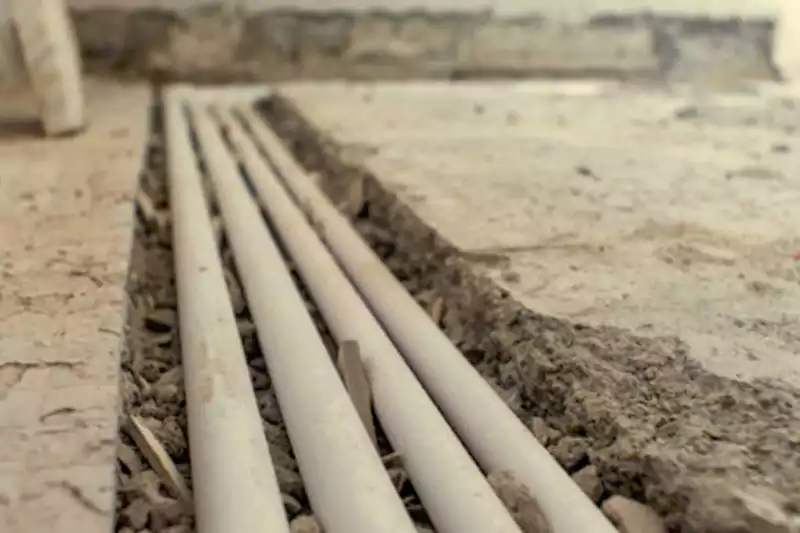
Conducto:
El conducto proporciona un acceso limitado a los cables una vez instalados, por lo que es necesario desmontarlos o cortarlos para realizar modificaciones o reparaciones.
El mantenimiento o la resolución de problemas pueden implicar más esfuerzo y tiempo debido a la naturaleza cerrada del conducto.
Canalización:
Los canales ofrecen un fácil acceso a los cables a través de cubiertas removibles o puntos de acceso, lo que simplifica el mantenimiento, las modificaciones y la resolución de problemas.
Los canales permiten una reconfiguración más sencilla o la adición de cables sin interrumpir todo el sistema.
Consideraciones sobre seguridad eléctrica y contra incendios:
Conducto:
El conducto proporciona una mejor protección contra daños físicos, humedad y riesgos ambientales.
Ofrece una resistencia al fuego mejorada debido a los materiales utilizados, como el conducto metálico que ofrece mayores propiedades de resistencia al fuego.
Canalización:
Los canalones también brindan protección a los cables, pero pueden ofrecer menos resistencia al daño físico en comparación con los conductos.
La resistencia al fuego puede variar dependiendo del material de canalización utilizado.
Es importante considerar los requisitos, las normativas y el presupuesto específicos del proyecto al elegir entre conductos y canaletas. Factores como la cantidad de cables, la ubicación de la instalación, las necesidades de accesibilidad y los requisitos de seguridad contra incendios influirán en la decisión. Consultar con electricistas o realizar un análisis exhaustivo de las necesidades del proyecto garantizará la elección adecuada entre conductos y canaletas.
Instalación y mantenimiento
10 pasos para instalar la tubería conductora
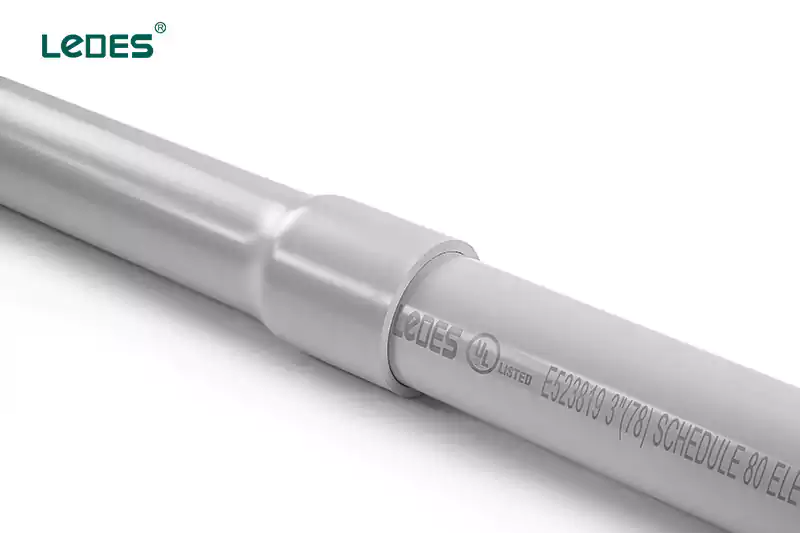
- Planificación: Determine el tamaño, el tipo (rígido o flexible) y el material del conducto según la aplicación y los códigos eléctricos locales.
- Planificación de ruta: Trace la ruta del conducto deseado, teniendo en cuenta los obstáculos, las curvas y los puntos de acceso necesarios.
- Calificación: Utilice un lápiz o marcador para marcar la trayectoria del conducto en las paredes, pisos o techos.
Montaje: Instale abrazaderas o soportes para conductos a intervalos regulares a lo largo de la ruta marcada para asegurar el conducto.
- Corte y doblado: Corte las secciones de conducto a la longitud necesaria con una sierra para metales o un cortador de conductos. Utilice una dobladora de conductos para crear curvas donde sea necesario.
- Enhebrar o tirar: Pase cables individuales a través del conducto o utilice cables precableados y páselos a través de las secciones del conducto.
- Unión: Utilice accesorios, conectores o acoplamientos adecuados para unir secciones de conductos de forma segura.
- Toma de tierra: Asegúrese de que el sistema de conductos tenga una conexión a tierra adecuada conectando cables de conexión a tierra a cada sección del conducto y al sistema de conexión a tierra.
- Fijación y sujeción: Asegure el sistema de conductos firmemente en su lugar usando abrazaderas, correas o sujetadores.
- Pruebas: Realice las pruebas necesarias para garantizar una instalación adecuada, como pruebas de continuidad, resistencia de aislamiento o caída de tensión.
- Cubierta: Instale cubiertas o accesorios para conductos para proteger los extremos expuestos del conducto y garantizar la seguridad.
10 pasos para instalar el canalón
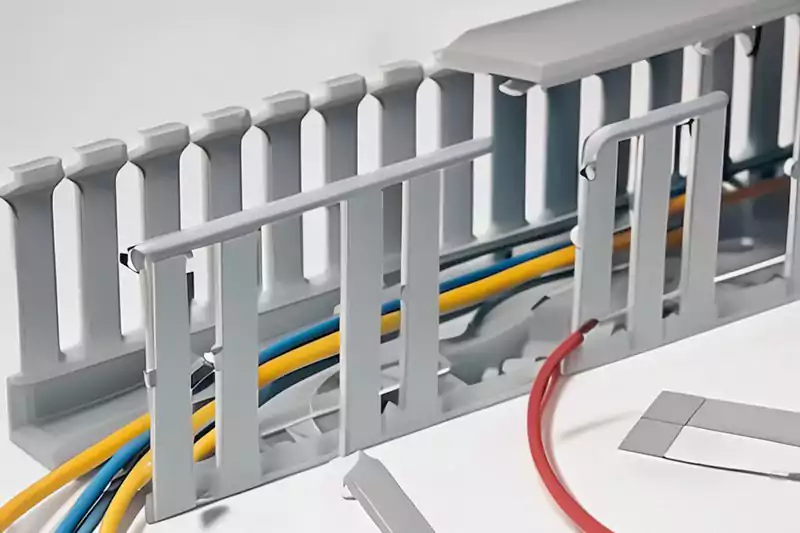
- Planificación: Determine el tamaño, el material y la configuración del canal en función de la cantidad y los tipos de cables que se van a acomodar.
- Planificación de rutas:Decida la ruta del cableado, teniendo en cuenta la accesibilidad, la gestión de cables y la estética.
- Montaje: Coloque soportes de canaletas, clips o tornillos en las paredes, techos o pisos a intervalos adecuados a lo largo del camino planificado.
- Corte: Corte las secciones de canaletas a las longitudes deseadas utilizando las herramientas de corte adecuadas, siguiendo las pautas del fabricante.
- Unión: Conecte las secciones del canal entre sí mediante conectores o acoplamientos compatibles.
- Colocación del cable: Coloque o inserte los cables en los compartimentos de la canaleta, asegurando una adecuada organización y segregación.
- Cubierta: Instalar tapas de canaletas o puntos de acceso, facilitando el acceso a los cables y asegurando al mismo tiempo su protección.
- Fijación: Asegure el sistema de canaletas firmemente en su lugar usando los sujetadores o clips provistos.
- Pruebas: Realice las pruebas necesarias, como comprobaciones de continuidad o integridad del cable, para garantizar una instalación adecuada.
- Etiquetado: Etiquete las secciones o compartimentos de los conductos para facilitar las actividades de identificación y mantenimiento.
8 consejos profesionales para el mantenimiento de conductos y canaletas:
- Inspecciones regulares: Realice inspecciones rutinarias del sistema de conductos o canaletas para identificar cualquier signo de daño, desgaste o conexiones sueltas. Revise si hay corrosión, abolladuras o impactos físicos.
- Limpieza: Mantenga el sistema de conductos o canaletas limpio, eliminando cualquier polvo, residuo u obstrucción que pueda acumularse con el tiempo.
- Gestión de cables: Asegúrese de que los cables estén correctamente organizados y asegurados dentro del conducto o sistema de canalización, evitando doblarlos, torcerlos o tensarlos excesivamente.
- Reparación y reemplazo: Repare o reemplace rápidamente secciones de conductos o canaletas, accesorios o cubiertas dañados para mantener la integridad del sistema.
- Protección contra la humedad: Tome medidas para evitar la entrada de agua o humedad en el sistema de conductos o canaletas, como sellar los puntos de entrada o usar juntas impermeables.
- Integridad de la puesta a tierra: Inspeccione y mantenga periódicamente las conexiones a tierra adecuadas dentro del conducto o sistema de canalización para garantizar la seguridad eléctrica.
- Etiquetado y documentación: Mantenga el etiquetado preciso de los cables y documente cualquier cambio o adición al sistema de conductos o canalizaciones para futuras referencias y fines de resolución de problemas.
- Cumplimiento de códigos y normas: Asegúrese de que las prácticas de instalación y mantenimiento cumplan con los códigos eléctricos, las reglamentaciones y los estándares de la industria pertinentes.
El mantenimiento regular y el cumplimiento de los procedimientos de instalación adecuados ayudarán a garantizar la longevidad, la seguridad y el rendimiento de los sistemas de conductos y canaletas.
¿Cuándo utilizar conductos o canaletas?
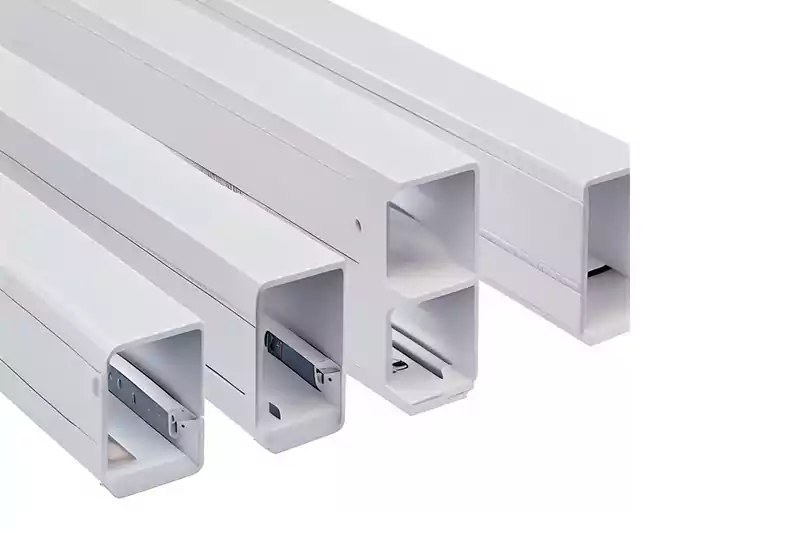
Los conductos se utilizan comúnmente en ambientes exteriores y húmedos, ofreciendo protección contra la humedad y los productos químicos. Son ideales para instalaciones que podrían sufrir modificaciones y se pueden modificar o retirar fácilmente. También son eficaces para minimizar las interferencias electromagnéticas al utilizar sistemas de conductos metálicos.
Las canalizaciones se utilizan a menudo para la distribución de energía en edificios, equipos y patios de maniobras donde se utilizan múltiples cables eléctricos. Son excelentes para la gestión de cables, facilitando su acceso y organización. Los sistemas de canalizaciones son adecuados para aplicaciones que requieren una alta distribución de corriente y donde la estética es importante.
¿Qué es la eficiencia del trunking?

La eficiencia de canalización se refiere a la eficacia y el uso de los sistemas de canalización para gestionar y distribuir eficazmente los cables. Mide la eficacia con la que el sistema de canalización optimiza el espacio y los recursos disponibles, manteniendo al mismo tiempo una gestión eficaz de los cables.
A continuación se presentan algunos factores que contribuyen a la eficiencia del trunking:
Capacidad del cable: La eficiencia de las canalizaciones depende de la capacidad del sistema para acomodar la cantidad y el tamaño de cables necesarios para una aplicación específica. Un sistema de canalizaciones bien diseñado debe tener la capacidad suficiente para gestionar las necesidades de cableado actuales y futuras sin sobrecarga ni congestión excesiva.
Organización del cable: Los sistemas de canalización eficientes garantizan la correcta organización y agrupación de los cables. Esto incluye el uso de accesorios adecuados para la gestión de cables, como bridas, clips o bandejas, para organizar y dirigir los cables de forma ordenada dentro de la canalización. Unos cables bien organizados minimizan el riesgo de enredos, torceduras u obstrucciones, lo que facilita el mantenimiento y la resolución de problemas.
Utilización del espacio: La eficiencia de las canalizaciones también depende de la eficacia con la que se utiliza el espacio disponible. Un sistema de canalizaciones bien diseñado maximiza el uso del espacio disponible, considerando factores como el radio de curvatura de los cables, los requisitos de ventilación y el acceso para mantenimiento. El uso eficiente del espacio garantiza que el sistema de canalizaciones pueda alojar los cables necesarios sin desperdicios ni sobrecargas innecesarias.
Escalabilidad y expansión futura: La eficiencia de la canalización incluye la capacidad del sistema para escalar y adaptarse a futuras ampliaciones o modificaciones de cables. Un sistema de canalización flexible se adapta fácilmente a las necesidades cambiantes, lo que permite la integración fluida de nuevos cables o la eliminación de los obsoletos. Esta escalabilidad minimiza las interrupciones y la necesidad de realizar modificaciones importantes en el futuro.
Accesibilidad y mantenimiento: Un sistema de canalización eficiente facilita el acceso a los cables, lo que permite realizar tareas de mantenimiento, reparaciones o modificaciones de forma rápida y sencilla. Los sistemas de canalización con cubiertas extraíbles o puntos de acceso simplifican la instalación y extracción de cables, lo que reduce el tiempo de inactividad y minimiza las interrupciones en la red o la infraestructura general.
¿Cuál es el mejor diseño de sistema de cableado: bandeja para cables o conducto?
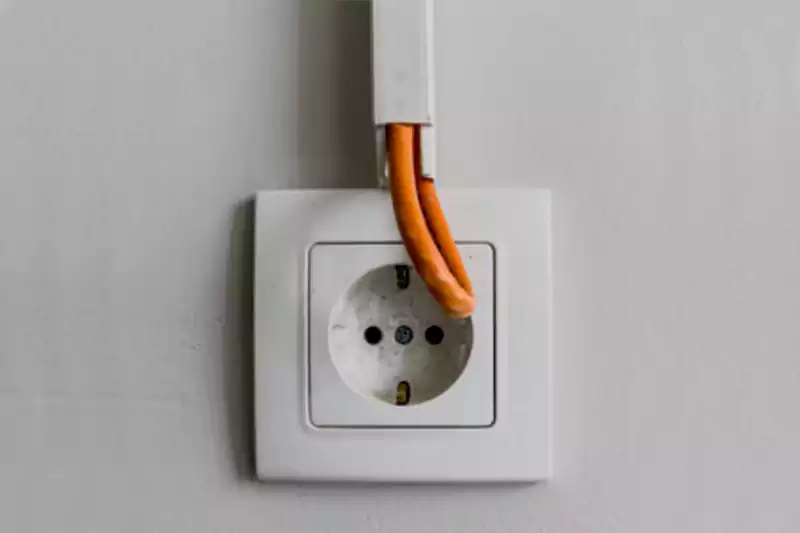
La elección entre bandejas portacables y conductos como diseño de sistema de cableado depende de diversos factores y de los requisitos específicos del proyecto. Ambos sistemas tienen sus ventajas y consideraciones. Las bandejas portacables suelen ser más adecuadas para gestionar grandes volúmenes de cable, ya que ofrecen flexibilidad y rentabilidad. Por otro lado, los conductos ofrecen una protección superior para los cables, blindaje EMI y cumplimiento de ciertas normativas. En algunos casos, se puede utilizar una combinación de sistemas de bandejas portacables y conductos, aprovechando las ventajas de cada sistema para las diferentes secciones de la instalación. Se recomienda consultar con electricistas profesionales y considerar los requisitos y limitaciones específicos del proyecto antes de tomar una decisión.
Pensamiento final
Los sistemas de conductos y canalizaciones desempeñan un papel fundamental en la gestión de cables eléctricos, ya que proporcionan protección, organización y enrutamiento. Este artículo abordó los puntos clave de estos sistemas. Los conductos encierran y protegen los cables, mientras que los sistemas de canalizaciones facilitan la limpieza y la identificación. Ambos contribuyen a la seguridad al minimizar los riesgos eléctricos. Las opciones de conductos incluyen conductos metálicos rígidos, metálicos intermedios y flexibles, cada uno con aplicaciones específicas. Los sistemas de canalizaciones suelen estar hechos de PVC o metal. Al elegir entre conductos y canalizaciones, se deben considerar los niveles de protección requeridos, los factores ambientales, la facilidad de instalación, el costo y el cumplimiento de la normativa. Se recomienda encarecidamente consultar con electricistas o ingenieros para una correcta selección e instalación del sistema. Los profesionales garantizan el cumplimiento de las normas y regulaciones de seguridad, lo que resulta en una infraestructura eléctrica confiable y segura.
Si tiene más preguntas sobre cables o sistemas de cableado, Ledes está aquí para ayudarle a resolver los problemas de cableado. Envíanos un correo electrónico o Envíe un formulario completo en cualquier momento.



